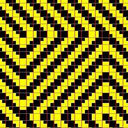[Clinical outcome of postchemotherapy retroperitoneal lymph node dissection and predicting retroperitoneal histology in advanced nonseminomatous germ cell tumours of the testis].
الكلمات الدالة
نبذة مختصرة
Objective: To explore the clinical outcome of advanced testicular nonseminomatous germ cell cancer patients undergoing post chemotherapy retroperitoneal lymph node dissection (PC-RPLND), and to analyze the relevant prognostic factors of lymph node pathological. Methods: A total of 43 consecutive testicular nonseminomatous germ cell cancer patients underwent PC-RPLND between March 2001 and December 2014 in Department of Urology at Sun Yat-sen University Cancer Center were retrospectively reviewed. The average age of the patients was (29.0±11.5) years (ranging from 12 to 58 years). Before PC-RPLND, 22 patients were classified as phase Ⅱ, while 21 were phase Ⅲ. Primary tumor histology revealed seminomatous elements in 19 cases, embryonal cell carcinoma in 22 cases, yolk sac tumor in 13 cases, chorionic carcinoma in 3 cases, mature teratomatous elements in 11 and immature teratomatous elements in 2 cases. Patients were treated with cisplatin-based chemotherapy after orchectomy and then underwent surgical resection of retroperitoneal lymph nodes.After PC-RPLND, all patients underwent a periodic review including the blood routine, biochemistry routine and computed tomography or ultrasonograph of the chest, the abdomen and the pelvis. The association of pathological data with patient's clinic features and the correlations between molecular features detected with each other were assessed by the t test, χ(2) and Fisher's exact test. Multivariate logistic regression were used to assess prognostic factors. Results: The median operative time was 278 minutes (ranging from 50 to 715 minutes). Median blood loss was 425 ml (ranging from 50 to 5 000 ml). Eight patients received blood transfusion intra-operatively, 2 patients underwent adjunctive surgical procedures, 4 patients developed ileus and 4 had an ascites chylosus following PC-RPLND, 1 patient had a postoperative hyperthermia and retrograde ejaculation was present in 10 patients. The transverse diameter of the residual tumor in patients ranged from 0.8 to 18.2 cm. Necrosis, teratoma and viable germ cell tumors were found in 15, 17 and 11 of all patients. The median follow-up time was 46 months (ranging from 6 to 169 months). There were 39 patients had no tumor recurrence, 7 patients were found recurrence after PC-RPLND, 5 died of malignant germ cell tumor. The normal serum lactate dehydrogenase (LDH) level before chemotherapy (HR=25.811, 95%CI: 0.678 to 982.624, P=0.017) and relative changes more than 50% in retroperitoneal lymph node size (HR=0.016, 95%CI: 0 to 0.698, P=0.032) were statistically significant prognostic factors of the presence of necrosis. Conclusions: Since most residual masses are not sensitive to chemotherapy, PC-RPLND is still an essential part of the treatment of metastatic testicular nonseminomatous germ cell cancer. Patients with the normal serum LDH level before chemotherapy and a shrinkage of 50% or more in retroperitoneal mass have a considerably chance of having necrosis in the retroperitoneum resection. This may help to refine the selection of candidates for PC-RPLND.



